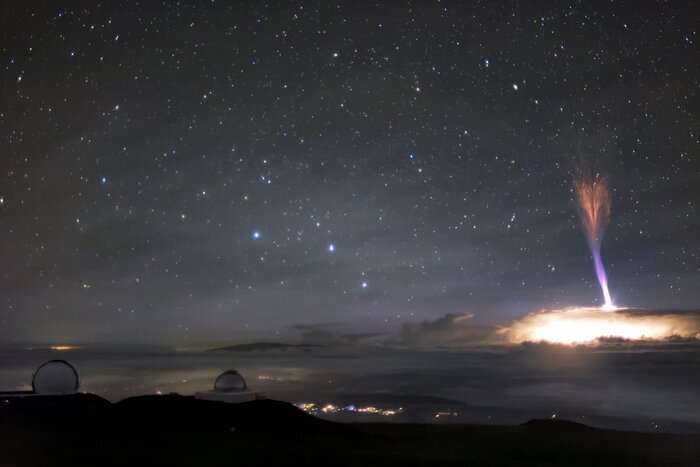 Red Sprite Lightning over the Andes
Red Sprite Lightning over the AndesExplanation: What are those red filaments in the sky? They are a rarely seen form of lightning confirmed only about 30 years ago: red sprites. Recent research has shown that following a powerful positive cloud-to-ground lightning strike, red sprites may start as 100-meter balls of ionized air that shoot down from about 80-km high at 10 percent the speed of light. They are quickly followed by a group of upward streaking ionized balls. The featured image was taken earlier this year from Las Campanas observatory in Chile over the Andes Mountains in Argentina. Red sprites take only a fraction of a second to occur and are best seen when powerful thunderstorms are visible from the side.
| << Previous APOD | This Day in APOD | Next APOD >> |

